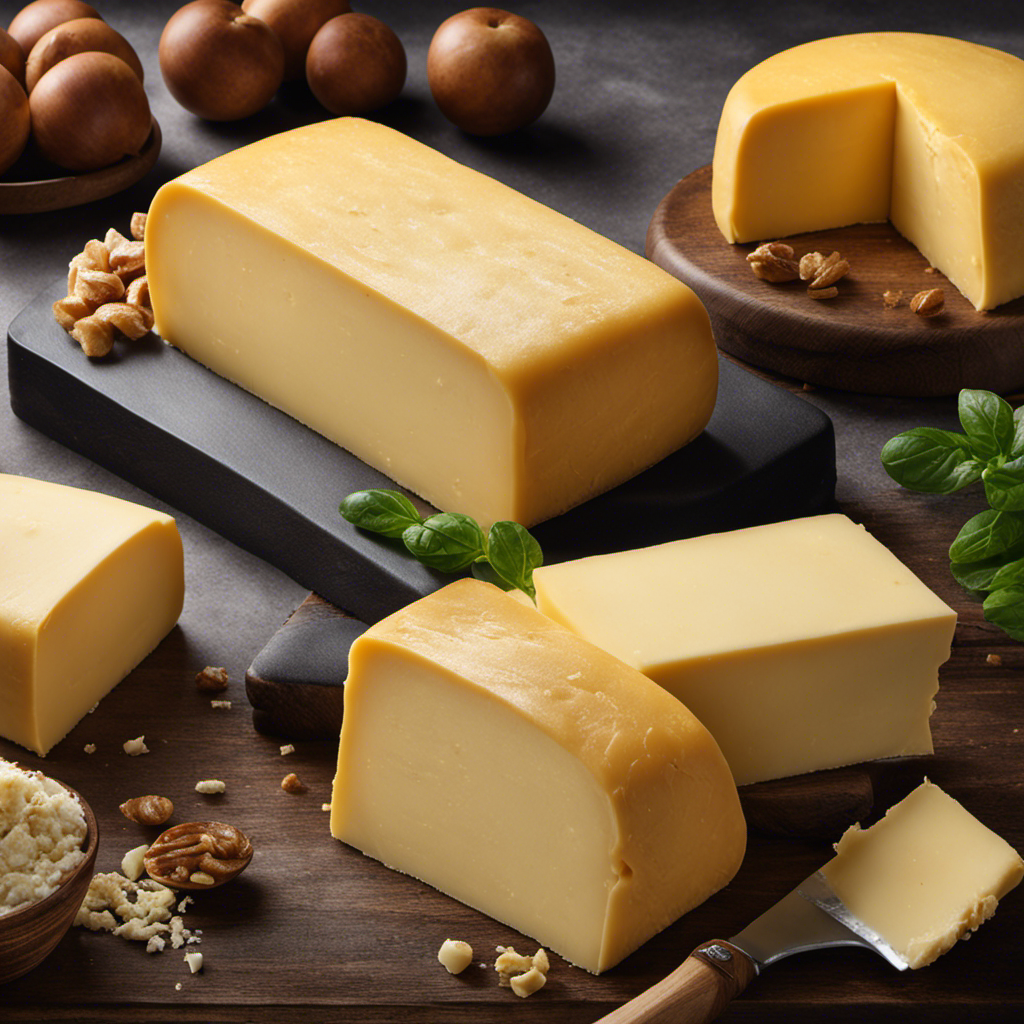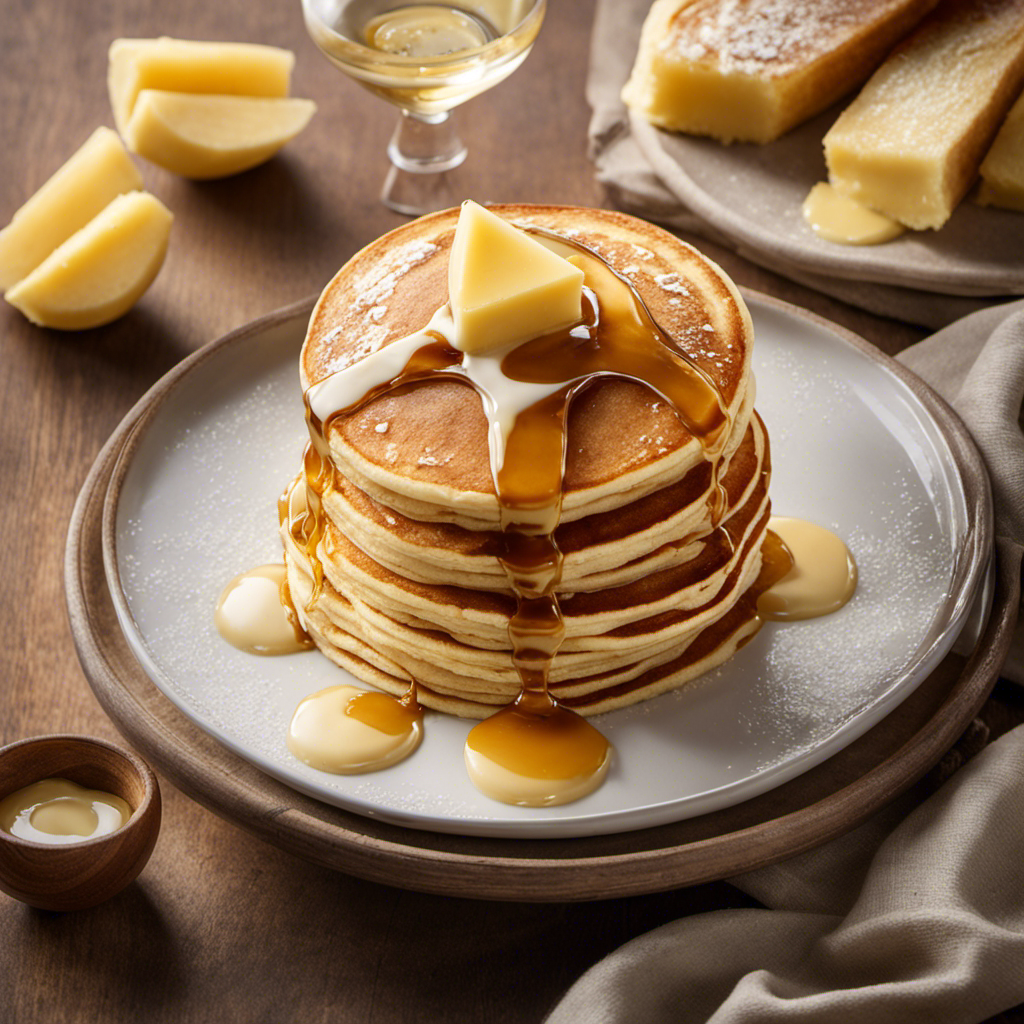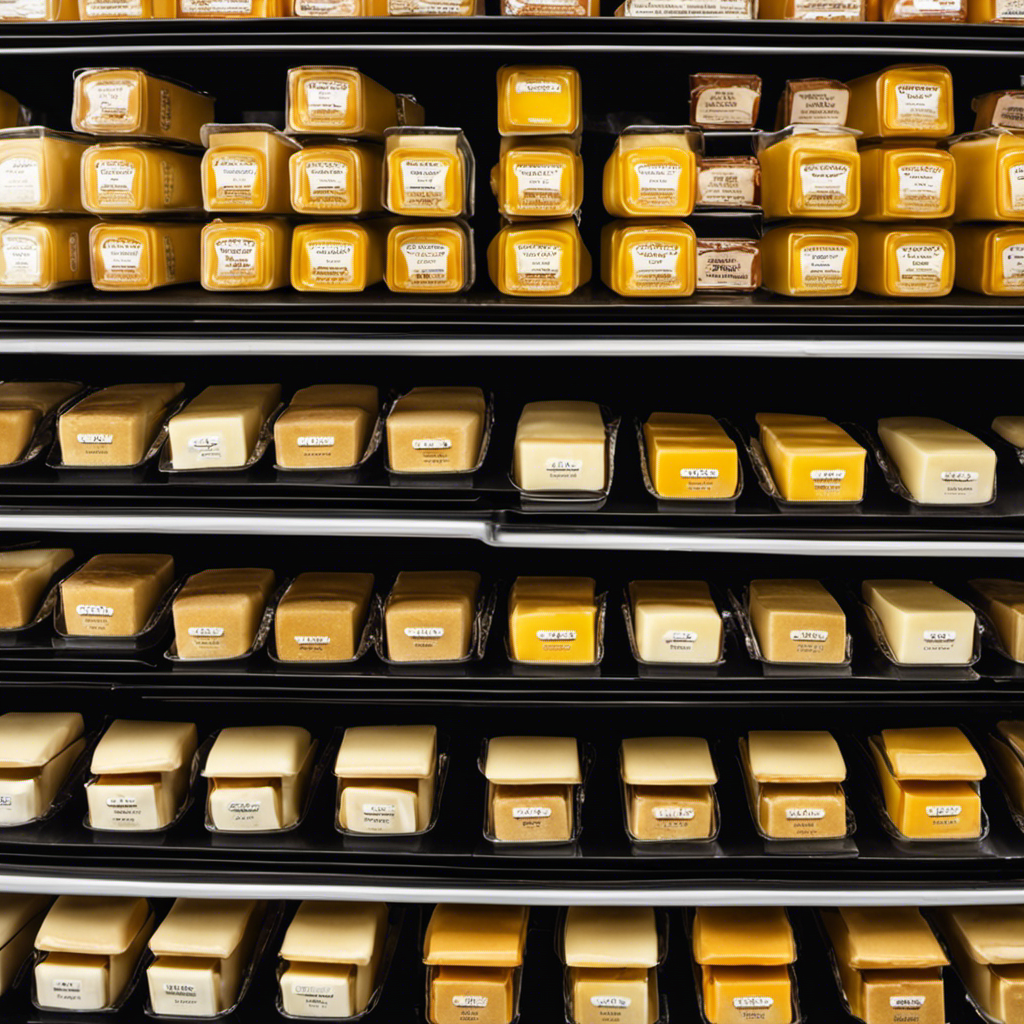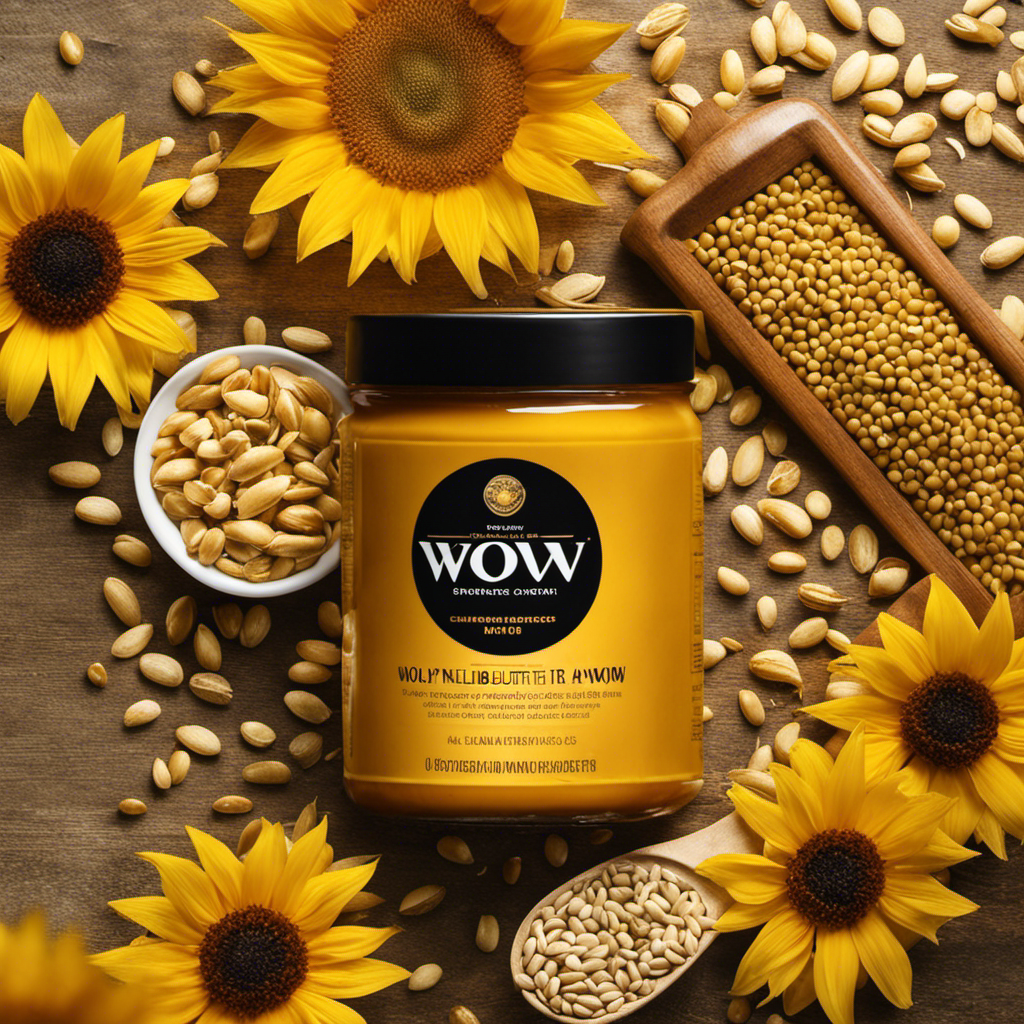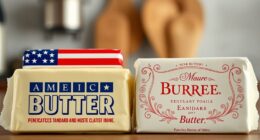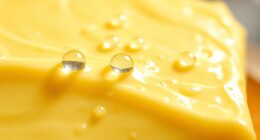Hello, aficionados of cheese!
Have you ever wondered what butter cheese is and why it’s so deliciously irresistible?
Well, you’re in for a treat because I’m about to take you on a journey through its rich history, the various types that exist, and the fascinating process of how it’s made.
Prepare to have your taste buds tantalized as we explore the culinary wonders and health benefits of this creamy delight.
So, sit back, relax, and let’s dive into the world of butter cheese!
Key Takeaways
- Butter cheese originated in Germany and is popular in the United States and other countries.
- It incorporates butter into the cheese-making process, resulting in a smooth and creamy texture with a slightly sweet and buttery flavor.
- There are various types of butter cheese, such as Brie, Camembert, Gouda, and Havarti, each with its own unique taste and characteristics.
- Butter cheese is not only delicious but also offers health benefits, as it contains essential vitamins and minerals, is lower in fat and cholesterol compared to other cheeses, and provides a good amount of protein for muscle growth and repair.
History of Butter Cheese
If you’re curious about the history of butter cheese, you’ll be fascinated by its origins and evolution.
Butter cheese, also known as butterkäse, has a rich history that dates back centuries. This cheese originated in Germany, where it was first made by incorporating butter into the cheese-making process.
The addition of butter gives the cheese a smooth and creamy texture, as well as a slightly sweet and buttery flavor. Over time, butter cheese has become popular in many other countries, including the United States. Its influence on modern cheese-making techniques is significant, as it has inspired the creation of other creamy and buttery cheeses.
In addition, butter cheese holds cultural significance in German cuisine, often being enjoyed on bread or used in cooking traditional dishes.
Types of Butter Cheese
There are various types of butter cheese available in the market. Here are four popular options to consider:
-
Brie: This creamy and buttery cheese has a mild flavor with hints of mushroom. It pairs well with fruits like apples and pears, as well as crusty bread.
-
Camembert: Similar to Brie, Camembert boasts a rich and buttery taste. It has a slightly stronger flavor profile and pairs perfectly with crunchy crackers and sparkling wine.
-
Gouda: This Dutch cheese is known for its smooth texture and nutty flavor. It pairs wonderfully with sweet and tangy fruits like grapes and apricots, as well as dark beers.
-
Havarti: With its creamy and buttery taste, Havarti is a versatile cheese. It goes well with both sweet and savory accompaniments, such as figs, honey, and cured meats.
Whether you’re hosting a dinner party or enjoying a simple snack, these butter cheeses are sure to delight your taste buds.
How Butter Cheese Is Made
To make butter cheese, you start by curdling milk with an acid like lemon juice or vinegar. This process causes the milk to separate into curds and whey. The curds are then drained and pressed to remove excess liquid, resulting in a soft and creamy cheese.
Butter cheese is known for its rich and buttery flavor, which sets it apart from other types of cheese. Unlike traditional cheeses that undergo a fermentation process, butter cheese is made by simply curdling the milk. This makes it a quick and easy cheese to make at home.
There are many butter cheese recipes available, some of which incorporate herbs or spices for added flavor. Whether spread on a slice of bread or used as a flavorful addition to recipes, butter cheese is a delicious and versatile cheese option.
Culinary Uses of Butter Cheese
One popular way to enjoy butter cheese is by spreading it on crackers or bread. Its creamy texture and melting properties make it perfect for this purpose. Here are four delicious ways to use butter cheese:
- Grilled Cheese Sandwich: Melted butter cheese between two slices of bread creates a gooey and flavorful sandwich that is hard to resist.
- Pasta Sauce: Add grated butter cheese to your favorite pasta sauce for a rich and creamy twist. It adds a velvety texture and enhances the flavor.
- Baked Potatoes: Stuffing a baked potato with butter cheese creates a luscious filling that melts in your mouth.
- Cheese Fondue: Butter cheese can be melted and used as a base for a delicious cheese fondue. Dip your favorite bread or vegetables for a scrumptious treat.
These are just a few examples of how versatile and delicious butter cheese can be. Now, let’s explore the health benefits of this delectable cheese.
Health Benefits of Butter Cheese
Butter cheese offers a range of health benefits when enjoyed in moderation. This delicious cheese is not only a tasty addition to your meals, but it also provides important nutrients. With its creamy texture and rich flavor, butter cheese is a popular choice among cheese lovers.
It is packed with essential vitamins and minerals, including calcium, vitamin B12, and phosphorus. Compared to other types of cheese, butter cheese is lower in fat and cholesterol, making it a healthier option. It also contains a good amount of protein, which helps in muscle growth and repair.
Frequently Asked Questions
Can Butter Cheese Be Used as a Substitute for Regular Butter in Baking Recipes?
Yes, butter cheese can be used as a substitute for regular butter in baking recipes. However, there are other alternatives to butter cheese for baking, such as margarine or vegetable oil.
Are There Any Lactose-Free Options Available for Butter Cheese?
Yes, there are lactose-free options available for butter cheese. They can be used as substitutes in baking recipes for those who are lactose intolerant. It’s a great way to enjoy the taste without the discomfort.
What Is the Shelf Life of Butter Cheese and How Should It Be Stored?
The shelf life of butter cheese varies depending on factors like packaging and storage conditions. To ensure its freshness, it should be stored in an airtight container in the refrigerator.
Can Butter Cheese Be Frozen for Long-Term Storage?
Yes, you can freeze butter cheese for long-term storage. It’s a fantastic option to have on hand for future recipes. The creamy texture and rich flavor make it a versatile ingredient.
Are There Any Variations of Butter Cheese That Are Specifically Made for Individuals With Dietary Restrictions, Such as Vegan or Gluten-Free Options?
There are vegan alternatives to butter cheese available for individuals with dietary restrictions. These options are made from plant-based ingredients and offer similar taste and texture. They can be a healthy choice with added health benefits.
Conclusion
In conclusion, butter cheese is a delectable dairy product that has a rich history and a wide variety of types. Made by combining butter with cheese, it offers a unique and indulgent flavor that can be used in various culinary creations.
Not only does butter cheese enhance the taste of dishes, but it also provides several health benefits, including being a good source of calcium and protein. Interestingly, studies have shown that consuming butter cheese in moderation can improve mood and reduce stress levels, bringing joy to our daily lives.
So why not treat yourself to some butter cheese and let its creamy goodness melt away your worries?
